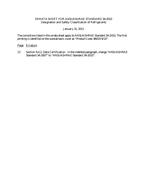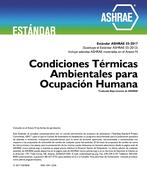Description
Click here to purchase
In this paper, the authors summarize data and key findings from the demonstration of thermally driven heat pump (TDHP) combination space heating (SH) and domestic hot water (DHW) systems. TDHP systems are innovative fuel-fired heat pumps installed in “combi” applications for residential and commercial SH and DHW solutions. The TDHP can be retrofitted for both (a) SH in place of a traditional furnace, and (b) DHW in place of a conventional water heater. Major components of the system are the TDHP, providing high-efficiency heating via a single-effect ammonia absorption cycle, an indirect storage tank (IST), and an indoor hydronic air handler unit (AHU), which is installed in place of a furnace. According to the US EIA, of the estimated total natural gas consumed by the United States in 2020, 15% or 4.65 trillion therms (.465 Exajoules) were consumed by the residential sector (U.S. EIA). While this encompasses all residential gas use, a majority of this is space and DHW heating. Most residential SH and DHW systems utilize low-efficiency furnaces and water heaters with thermal efficiencies of ~80% and ~62%, respectively. With an estimated improvement of operating efficiency up to ~140% for the combi operational mode, broad deployment of TDHP combis could reduce natural gas consumption by up to 53% compared to the typical gas heating case, with commensurate reduction in CO2-equivalent emissions. The crucial factor in achieving a higher delivered efficiency from the TDHP is the optimization of its controls, minimizing losses, and right-sizing. When optimized for performance, the TDHP can operate in a quasi-steady state mode with reduced part-load losses, as verified by lab test data. If these conditions are not met because cycles are too short or varied, if the TDHP is consistently load-following, or the controls are improperly responding to SH or DHW calls, then system delivered efficiencies will suffer. Additionally, installation best practices such as fully insulated hydronic lines, short hydronic loop lengths, proper hydronic glycol percentage, and more must be followed so that heating losses are minimized. The relationship between each of these and system efficiencies was assessed via lab testing of TDHP combis and in field demonstrations across sites located in Illinois, Wisconsin, and Ontario. By analyzing system performances over a wider sample size, under a variety of operating conditions and loads, the importance of system design and optimization can be better understood to aid in the future implementation of heat pump combi systems and can be a pathway for greenhouse gas reductions.
Product Details
- Published:
- 2023
- Number of Pages:
- 9
- Units of Measure:
- Dual
- File Size:
- 1 file , 2 MB
- Product Code(s):
- D-AT-23-C034
- Note:
- This product is unavailable in Russia, Belarus




